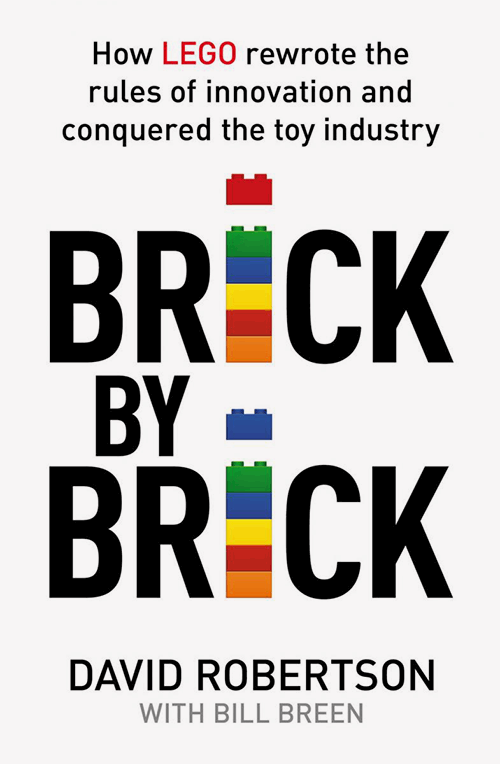Brick by Brick
How LEGO Rewrote the Rules of Innovation and Conquered the Toy Industry

According to the press release from Random House Business Books, “Brick by Brick is the fascinating account of the iconic toymaker LEGO and its rise, perilous fall, and spectacular rise again to become the world’s fastest growing toy company.” The book was written by David Roberson, an innovation specialist, with the help of Bill Breen, a writer who has helped to make the text more accessible.
Despite its brick-decorated cover, the first impression of the book might not make you want to immediately buy it as a valuable addition to your LEGO book collection. The fact that the book is written by a former LEGO Professor of Innovation and Technology Management, published in the Business Books catalogue and that it “details the unique innovation guidance system that allows managers to channel the company’s creative endeavours” may not inspire much confidence that you will actually enjoy the contents.
However, even before turning to the first page there are several hints that the contents are worth reading: David Robertson made more than a dozen trips to Billund and conducted interviews with Kjeld Kirk Kristiansen and LEGO CEO Jørgen Vig Knudstorp as well as dozens of other senior managers. He also met Adam Reed Tucker (for all intents and purposes the originator of LEGO Architecture) and Steven Hassenplug (one of the first 4 AFOLs who were brought aboard to help in the development of the MINDSTORMS NXT).
While the book is indeed oriented as a business case for innovation, there is much information of interest to AFOLs and it is presented in an interesting and easy to read way. The book starts off with a short introduction about the origins of the company in which we learn that while the customer is important, in a very real way LEGO’s first relationship is with the stores. Unless it can cater for the needs of its key account relationships it cannot get its product to the final customer.
The book also explains how LEGO came to look for “the wisdom of the crowd”, using input from fans to improve their products. It paints a very clear picture of the degree of influence this crowd can and should have—a valuable insight for any AFOL who at heart would like to make a difference with the company.
Most AFOLs will be able to tell you one of the mistakes LEGO made during its crisis years was the “juniorisation” of sets, but Brick by Brick explains why Jack Stone and Galidor were bad business decisions, quite apart from the fact that AFOLs don’t like them. It also explains the origin and the extent of the success of the Bionicle theme, which turns out to be partly responsible for LEGO surviving its crisis, why LEGO Universe failed (and Minecraft succeeded) and why Ninjago turned into such a success.
Personally I was most interested to read the chapter about the innovation and development of MINDSTORMS (it contains a picture of the 4 original MUPs—a reason in itself to own a copy of the book) as well as the development of the Architecture theme. In both cases AFOLs played an important although very different part in the development of business.
To sum up, Brick by Brick is a serious but entertaining look at the what made LEGO great, how it nearly failed and what has made it great again, as well as a window onto the underlying business principles of some of its most iconic themes and offers a clear description of what may be expected of its interactions with AFOLs.
2017